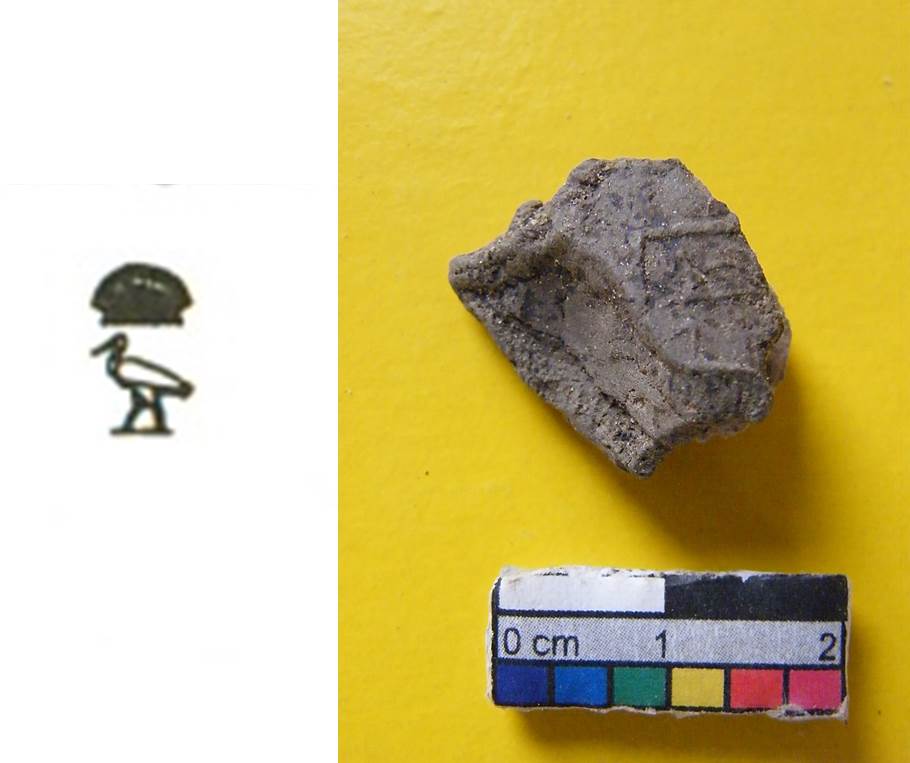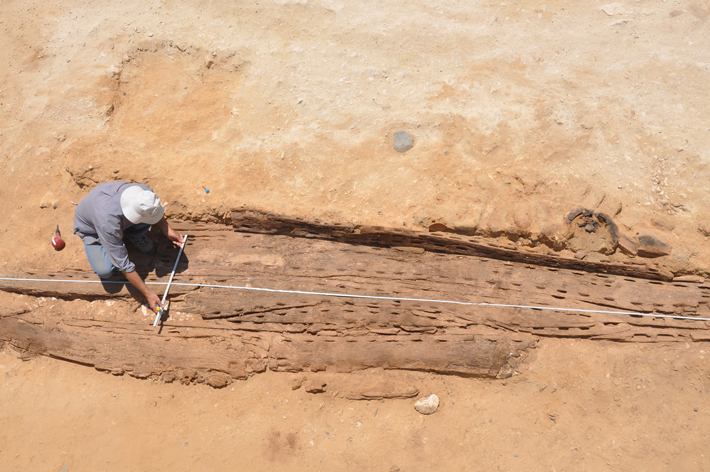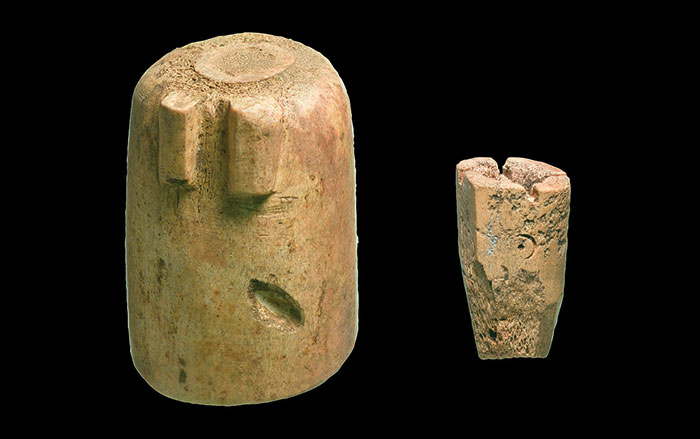
CAIRO, EGYPT—Mamdouh El Damaty, Egypt’s Minister of Antiquities, announced that a mastaba, or mudbrick tomb, from the Old Kingdom period had been found in Quesna, which is better known for its Roman period antiquities. “In 2010 a mudbrick monument was located in the north of the site that had beer jars dating to the early Old Kingdom. The shape of this monument suggested that it was a mastaba, but further investigations were needed to fully understand the architecture and its exact date. In the last few days of the 2014 excavation, an extraordinary artifact was found in one of the two burial niches—a seal impression bearing the name of King Khaba within a serekh,” Joanne Rowland of the Free University of Berlin said in a statement released by the Egypt Exploration Society. In Egyptian hieroglyphs, a serekh is the rectangular enclosure that surrounds the text of a royal name. King Khaba ruled during the Third Dynasty for about six years, and this tomb is the first to be found in more than 100 years that can be assigned to his reign. The tiny fragment was found by team member Yassen Hasan Abdallah Omer, who carefully examined every piece of mud removed from the site. To read about another tomb recently unearthed in Egypt, see "Tomb of the Chantress."










